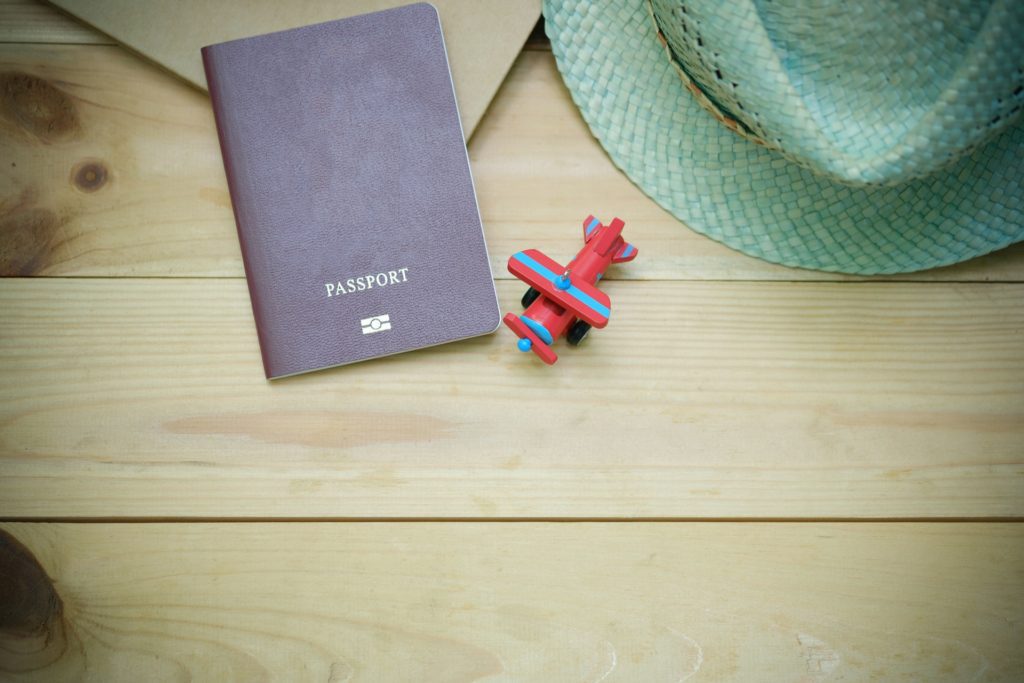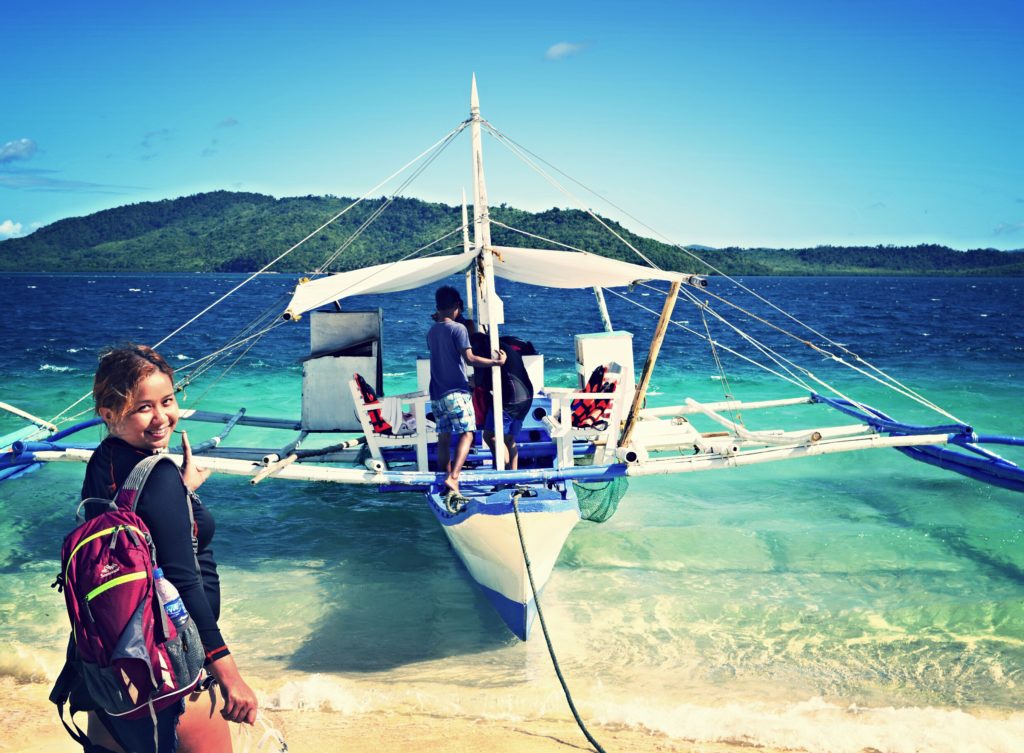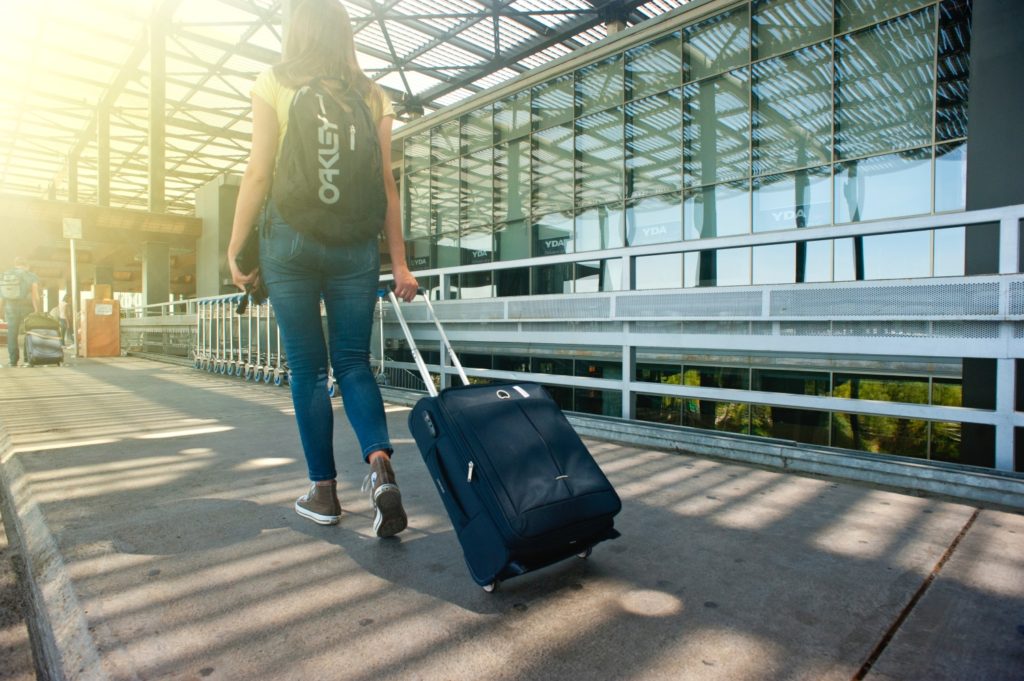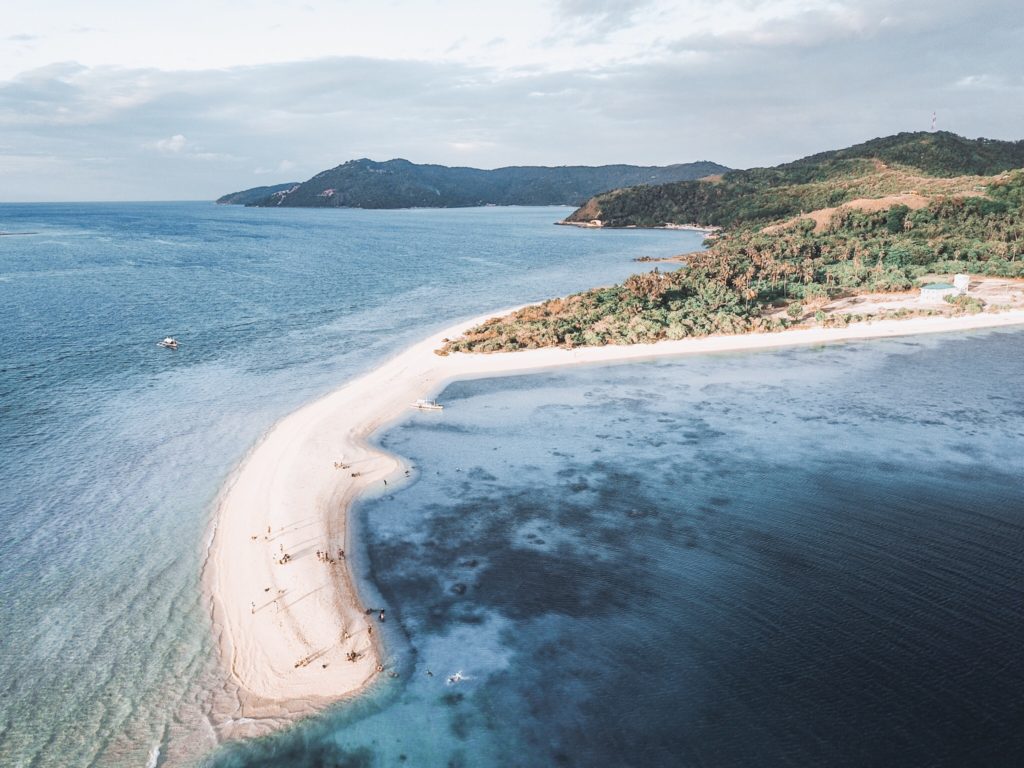One can’t easily ignore the pristine beauty and unrivaled charm of the Philippines that have always made it to the list of top travel destinations in the world year after year. The pandemic may have limited entry to the country to returning Filipinos and closed its doors to foreign travelers in 2020 but the local tourism is now slowly recuperating. And soon enough, our borders may be opened to foreign visitors with our more than 7500 islands ready to welcome and beguile everyone. Now the tricky part is where you should start exploring. Many would say Boracay and Palawan. Sure, these stunners are a must but as a local who has been to many parts of our country, I can let you in on a secret most people know nothing about. Hence this Ultimate Philippine Travel Guide.
What Are The Requirements To Travel To The Philippines

Before I get into spilling all the insider tips I have from the most beautiful beaches to how to travel cheaply, let me first tell you everything you need to know before your trip. Things like visa, entry guidelines, and health & safety protocols you should be aware of. The Philippines is usually not very strict when it comes to letting foreign visitors in (pre-pandemic). Heightened restrictions were only imposed to control the spread of Covid-19. But depending on your country of origin, other than a passport valid for six (6) months, here are the necessary requirements.
US (United States Of America)
– US citizens can enter the Philippines visa-free for the initial stay of 30 days. Should you plan to stay more than 30 days, a visa must be obtained prior to your travel. Learn more about it here.
UK (United Kingdom)
– Citizens from the UK can enter and stay in the Philippines visa-free for 30 days. A tourist visa can also be obtained from the Philippine Embassy prior to your travel which will allow an initial entry of 59 days.
EU (European Union)
– Citizens from EU countries are not required to have a visa for an initial stay of 30 days but a returning flight ticket to the country of origin or to the next country of destination is necessary.
—Important Note:
- For the complete list of countries allowed to enter the Philippines without a visa for 30 days, please visit the Department of Foreign Affairs website.
—Covid-19 Restrictions Until Further Notice
- Covid-19 testing and a 14 day quarantine are mandatory for everyone entering the Philippines.
- Travel to the Philippines is strictly for business. Leisure travel is not yet permitted.
- All passengers coming from or who have been to India, Pakistan, Bangladesh, Nepal, Sri Lanka, Oman, and the United Arab Emirates within the 14 days preceding their arrival in the Philippines shall not be allowed entry.
- Wearing a face mask and face shield especially in public places is required. Social distancing must be observed.
- For updates about travel restrictions, please visit the DFA website.
- All passengers must obtain a health declaration form to enter the Philippines or e-CIF. Check out this link to apply for e-CIF.
Useful Tips When Traveling To The Philippines
—Entering The Philippines
Depending on the country where you will be flying from, entry to the Philippines can be done in any of the international airports like Cebu and Puerto Princesa other than the NAIA (Ninoy Aquino International Airport) located in the country’s capital. For those who wish to visit Boracay, flights bound to Caticlan from countries such as Hong Kong are available. You can check any of our local carriers like Philippine Airlines and Cebu Pacific for schedules.
—Transportation
- If you would be arriving in the Philippines via the NAIA, be very wary of taxi scams. Avoid the yellow taxis as they charge more. White taxis are cheaper but make sure to pay by the meter and avoid drivers who would offer a fixed amount in order to drive you to your destination. Another great option is to use Grab, a car-booking app since they’re usually cheap during non-peak hours from 10 AM – 4 PM and 10 PM – 5 AM. I also recommend that you arrange a transfer with your hotel until you get acquainted with the city better.
- Exploring the country’s capital is a must for everyone visiting the Philippines. I know you probably heard rumors that it’s stinky and chaotic but I guarantee that there is beauty in all of it. Other than metered taxis, the MRT/LRT and jeepneys are your best options for travels within the city. You can opt to walk your way for short distances instead of riding a tricycle that is usually a ripoff.
- Since the Philippines is an archipelago, travel to most provinces involves air and sea travel. This is very true for most destinations located south of the capital. Northern provinces are best explored by bus, except for Batanes.
—Food
- The Filipino cuisine is of Chinese, Indian, American, and Spanish influences and is very diverse due to multiple ethnicities in the country. When it comes to food, the Philippines is not the best place for vegetarians, as the options are very limited, but it’s a paradise for meat lovers. We sure know how to make our meats from our Lechon (roasted whole pig) to our adobo (pork/chicken stew).
- If you would like to try authentic Filipino food, your best bet is the several small eateries scattered all over the country. I’m not saying that all of them are good. It’s a hit or miss sometimes and you just need to keep trying until you find the best ones. Of course, there are Filipino restaurants I can recommend but I will save that for another discussion. Know that unless the food is prepared/cooked upon order, always remember to go eat during the morning to make sure that the food is still fresh.
- Rice is a staple to Filipinos. No Filipino in their right mind would eat a good dish without a plate full of steamed rice.
- Street foods in the Philippines are also a must-try. The most popular is probably balut (boiled duck eggs) but I’d say go for our ihaw-ihaw (skewers of pork/chicken meat/parts and innards) and dip it in our signature vinegar sauce.
- Our dipping sauces are mostly made of soy sauce and vinegar or soy sauce and calamansi. Chilis can be added too. Gravy is rare.
- Our foods are usually not spicy or mildly spicy. Some are even sweetened with sugar or pineapples. Spicy food is a thing of the Bicolanos, Ilocanos, and Maranaws based on my observation.
—People & Language
- People in the Philippines speak several languages depending on the region. In most cities and tourist destinations, Tagalog and English are widely spoken and understood. Please know that most people of old age only understand their native tongue which varies per region so it is best to speak to the young ones when asking for directions and whatnot.
- Filipinos are used to seeing foreigners but Caucasians do catch our fancy the most. We love to stare but most often than not, a stare is just a stare and doesn’t really mean anything. Just a product of our curiosity, I guess. The most friendly cities to foreigners other than those in the capital are Cebu, Dumaguete, and Puerto Princesa.
- Filipinos are generally friendly and kind in nature. We are always ready to help and provide assistance. This doesn’t mean you can relax. Foreigners must always exercise caution and avoid secluded places unless accompanied by an accredited local guide.
—Connectivity
- There are 2 major networks in the country namely Globe and Smart. Globe has better coverage in the majority of the provinces than Smart as observed in many of my travels. Of course, it can vary. As for phones, Android smartphones connect more easily to the networks than iPhones.
- In most provinces, internet connection is slow to non-existent so services are sometimes limited to calls and texts. Expect no high-speed internet the moment you leave the city.
- Prepaid sim cards can be acquired at the airport during your arrival.
—Money & Currency
- The Philippine peso is the only currency used in the country for all transactions. Make sure to convert your money in the exchange counters at the airport before getting on a taxi to explore or go to your hotel. You can also withdraw from various ATMs there.
- When leaving the city to explore secluded or faraway destinations, have enough cash on hand as ATMs may not be available elsewhere during your trip. Better to have more than less.
—Best Time To Visit
The Philippines is best explored during the summer months from March to May. Typically, January to June is the best months to visit since the other half of the year is mostly rainy. It varies from different regions though. There are places in the Philippines with even rain distribution throughout the year like Cebu, Bohol, and Negros Provinces so these places can be visited all year round. Other provinces have more rainfall than sun or the other way around but to make the most out of your visit, I’d say avoid the rainy season when your chances of getting caught in a typhoon are not so unlikely.
—Money-Saving Tips
- Utilize public transportation. Avoid unreasonable offers from drivers on taxis and ask to use the meter.
- If you don’t mind mingling with people, always join a tour when exploring.
- Going around most destinations is cheap with a rented motorcycle.
- Avoid booking a tour in advance from travel agencies unless it’s necessary or required. Tour packages are more affordable when booked directly with local tour operators.
The Best Things To Do In The Philippines

Explore The Islands – What else is best to do in a country filled with more than 7500 islands than to hop from one island to another. Island tours are offered in most tourist destinations. For a more customized experience, you can stay away from the tour packages and rent your own boat to explore.
Hike/Climb Mountains – Though the Philippines is known more for its beautiful islands, our mountains can’t be missed too. Those who seek extreme adventure can try their hands on the country’s highest peak, Mt. Apo or Mt. Guiting-Guiting which is considered the most treacherous. Easy hikes are just a bus ride away from the capital as well. Check out my list of the 10 Best Hikes Near Manila.
Discover Culture – Filipino Culture has evolved throughout history due to numerous influences especially in people who live in the city. Some of the most untainted and purest forms of our culture are kept in the mountains and one of the best places to immerse in it is the Cordillera Region. Try Sagada for starters and move your way to the least explored villages of Sadanga and Maligcong.
Experience Our Festivals – The Philippines has over a hundred festivals to celebrate our patrons throughout the year with the most well-known being the Sinulog Festival Of Cebu. Ati Atihan in Aklan and Dinagyang in Iloilo are not going to settle for runner ups too. If you want to have fun while learning about our country, taking part in our festivities is the way to go.
Go On A Dive – Our seas are one the richest in the world. Scuba diving is best for those who would like to see our colorful corals and diverse marine ecosystem. We have shipwrecks too. Be sure to bring your license. Otherwise, freediving is another option that is best done with the sea turtles in Apo Island and whale sharks in Oslob.
Surf The Waves – We have one of the wildest coasts but we don’t just sit it out when the sea waters get tough and monstrous. We ride them! Surfing is famous in many places in the country, most notably in Siargao. If you want to learn a new skill, it might as well be surfing.
What Are The Must-See Places In The Philippines
As promised, I will now tell you the best places you should go to on your visit to the Philippines. I will leave the famous island of Boracay out of this list to pave the way to other less-known destinations in the country. Here we go.
The Best Beaches – If you’re looking for fine white sand beaches and shimmering turquoise waters without the crowd, here are the best on my list.
- Anguib Beach, Cagayan – Found in the northernmost tip of the country and was once used for the Survivors series. This is the best spot to spend the night after exploring Palaui Island.
- Cresta De Gallo, Romblon – This is an uninhabited island 20 minutes off the coast of San Fernando town in Romblon.
- Silang Cove, Cagayan – One of the least explored beaches in the country due to the difficulty of the journey in getting there.
- Mahabang Buhangin, Calaguas – As beautiful as Boracay, if not more beautiful.
- Punta Sebaring, Balabac Palawan- If there is one beach that could give Boracay a run for its money in terms of sands, this is exactly it.
The Best Views – If you’re someone who loves to marvel at the grandeur and beauty of our world, here are the ones that made it to my list of places with the best views.
- Babuyan Islands, Cagayan – The stunning views on this group of islands make surviving the wild journey to get here all the more worth it.
- Coron, Palawan – This place is one of my favorites and a delightful one when it comes to gorgeous views of the sea dotted with karsts.
- El Nido, Palawan – Ha Long Bay but cleaner and with gorgeous beaches. One of the best sunsets too.
- Batad, Ifugao – Home to the famous rice terraces and world heritage site. This is best visited a couple of weeks before the harvest season when the rice plants are at their ripest.
- Mt. Pulag, Benguet – Dubbed as the playground of the gods, this is where you can experience the most beautiful sea of clouds at sunrise.
Chasing Waterfalls – Chasing waterfalls is one of my favorite things to do when traveling. If you’re like me and you want to see the most gorgeous waterfalls in the country, here are your best bets.
- South Cebu – The southern towns of Cebu are home to the country’s most stunning waterfalls such as Kawasan and Aguinid Falls.
- Iligan, Lanao Del Norte – Known as the waterfall capital in the Philippines with over 30 waterfalls scattered all over it.
- Davao Oriental – The towering mountains surrounding the province made waterfalls a usual sight as is the case of Aliwagwag Falls.
There you have it, lovelies! I will definitely be updating this post on a regular basis in order to serve its purpose as the ultimate travel guide to the Philippines as I continue exploring our country. Feel free to mention if I miss anything. Drop your questions in the comments. Do share this to your friends. Until next time. Ciao!
Discover more from A Wanderful Sole
Subscribe to get the latest posts sent to your email.





